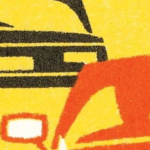The midsize pickup features an overhauled interior with Land Cruiser-inspired bits and rides on an upgraded ladder-frame architecture
One of the most famous pickup nameplates in the world has just entered its ninth generation. The new Toyota Hilux made its first global outing with a fresh exterior design, an overhauled interior, upgraded ladder-frame underpinnings and the addition of a fully electric powertrain option.
The new looks are inspired by the “Cyber Sumo” theme, doing without the hammerhead styling found in other Toyota models. The face boasts slimmer LED headlights, a body-colored honeycomb grille, angular bumper intakes and a rugged skid plate. The fully electric version is distinguished by a unique front bumper with a blocked grille and revised intakes.
More: Toyota’s Baby Land Cruiser FJ Looks Retro Enough To Break Your Heart
The profile looks familiar since the greenhouse, pillars, and doors are carried over from the outgoing model that has been around since 2015. Still, the redesigned front and rear fenders with the boxy wheel arches help freshen it up in combination with the new wheels. The rear end is more sculpted than before with sharper LED taillights and modern bumper.
Interestingly, Toyota has decided to scrap the single-cab and extended-cab bodystyles, meaning that the pictured dual-cab version will be the only option.
The interior has been overhauled, adopting the latest tech and styling features from the automaker’s parts bin. The boxy dashboard houses a free-standing 12.3-inch infotainment, a 12.3-inch digital instrument cluster (7-inch in lower grades) and physical controls for the A/C and basic functions.
The chunky steering wheel with the clicky buttons is sourced from the Land Cruiser. Other highlights include the small gearknob, the drive mode selector on the center console, the double storage compartment on the passenger side, and the dashboard-mounted cupholders. Safety equipment includes a “significantly extended” ADAS suite, bringing the Hilux on par with the rest of the automaker’s passenger lineup.
Multiple Powertrain Options
Toyota is known for its Multipathway approach in terms of available powertrains, and the new Hilux is a testament of that. Depending on the market, the pickup will still be available with the company’s tried-and-tested 2.8-liter turbodiesel in regular and mild-hybrid forms, alongside a 2.7-liter gasoline engine.
What is completely new is the fully electric option, with dual electric motors and a 59.2 kWh battery pack. According to Toyota, the zero-emission pickup will have 240 km (149 miles) of WLTP range or over 300 km (186 miles) of NEDC range. This doesn’t sound like much, but the company has also promised a hydrogen FCEV variant for 2028.
The cargo-carrying credentials remain unchanged, with a payload of up to 1,000 kg (2,205 lbs) and a towing capacity of up to 3,500 kg (7,716 lbs) for the ICE-powered model. The Hilux BEV will be able to carry 715 kg (1,576 lbs) and tow 1,600 kg (3,527 lbs).
Upgraded Underpinnings
Under the skin, the Hilux rides on an upgraded version of the IMV ladder-frame architecture of its predecessor. Still, it benefits from a new electric power steering, and a revised suspension setup with independent coil-sing front and rigid axle leaf sprung rear across the range. According to Toyota Australia, there are two different tunes – one “geared toward heavy load carrying and towing”, and the other targeting “enhanced ride comfort for everyday use”.
More: Toyota Shrinks Its Hilux Champ Into The Super Short Wheelbase
In terms of off-road credentials, the 4×4 versions use a part-time 4WD system with high and low range ratios, now improved with the standard fitment of a rear locking differential and the available Multi-Terrain Select system.
The new Hilux will launch in Europe and Australia from December 2025, followed by Asian markets in 2026, and Japan in mid-2026. Pricing and the detailed specifications for each market will be announced closer to the pickup’s launch.
Google News
MSN Start
Thanos Pappas, a product design engineer by trade, has been wading through automotive journalism for… Read full bio












